By Rick Carey, Auction Editor

‘Condition’ relates to the physical presentation of a car, not the accuracy of its restoration or presentation. It’s not a synonym for the points awarded by Bloomington, JCNA or other specialist organizations for the accuracy of casting dates, radiator caps and brake hoses. It doesn’t attempt to differentiate between correct totally original cars, street rods and race modified cars.
‘Condition’ ranks from 1 to 5, with plusses and minuses for further subtleties (a + is better, a – is worse), the car’s appearance and mechanical condition, as it is observed in a walkaround. That’s a scale that was developed years ago by my colleague Dave Brownell, has stood the test of time and remains in general use today, at least in the US.
The starting point is a new factory fresh car, as it was delivered. While logic would describe that car as ‘perfect’, the collector car world hasn’t adopted that way of thinking, creating Pebble Beach, Louis Vuitton and other restorations that are better than perfect showroom presentations.
Those beyond-perfect restorations are ‘1’ condition cars. With a little age and some looseness in their joints they’re ‘1-’ cars.
‘2’ condition cars are meticulous showroom quality restorations … or virtually new cars, like 1,000 km Enzos.
‘3’ condition means normally used highly original low mile cars or restorations that have seen some miles but been well kept and maintained. A ‘3’ would go in your garage and be driven on tours or regularly on weekends without feeling embarrassed or endangered in doing so, and in fact can be owned and enjoyed with pride and satisfaction. Most collector cars are ‘3’s.
‘4’ condition goes to cars that have serious, and even life-threatening, defects or have seen hard use not ameliorated by good and consistent maintenance. You wouldn’t take a ‘4’ to a local marque rally without being a bit self-conscious, and maybe a little concerned about finishing the event under your own power.
‘5’s are seriously threatened hulks: battered, rusty, misused and neglected. It’s a very bad car that gets a ‘5’. A ‘5-’ is a parts car unless it’s something like ‘Babs’, Parry Thomas’s record car dug up out of the sands of Pendine Beach, with rarity or history that’s so important it can’t be parted-out.
‘Character’
In these descriptions you’ll also see repetitive qualitative descriptions of cars’ overall character like ‘Older restoration’ and ‘Visually maintained, largely original’. They attempt to characterize in a limited number of phrases the larger qualitative impressions of the kind of treatment the car has received. In the context of potential owners’ evaluations and aspirations, there’s a vast difference between cars described as an ‘Unrestored original 3 condition’ and an ‘Older restored 3 condition’, a qualitative mental picture we hope the combination of the two ratings conveys. Many situations are judgment calls in which we’ll come down on the side that seems best to characterize the car.
These are largely subjective qualifications. I’m happy to report however that over many years of doing this I’ve been gratified (and sometimes surprised) to see how many times I’ve seen the same car years apart, scribbled down the field notes, character and condition, then checked the earlier report and found them to be essentially the same. There also is remarkable consistency among experienced observers.
Finally, this is a learning process. Inevitably there will be mistakes, oversights and misinterpretations. The comments, observations, education and corrections (but not vilification, thank you very much) of both owners and others better informed (and there is always someone better informed) will be gratefully acknowledged.
Accepted is another matter.
Shorthand Terms and Descriptions
CO = Competition car, original as-raced – A racing car built for competition and presented in nearly original condition. The term ‘run hard and put away wet’ is frequently used with this character term.
KO = Original, with non-original appearance items – It’s had appearance modifications in period (customized), and hasn’t been touched since.
MO = Original, period modified for competition or performance – Modified in-period for competition or better performance, but not an all-out competition car and probably drivable on the street both then and now.
RO = Original, with major mechanical repairs – An old car that’s been kept running, without reaching the standard of a mechanical restoration.
SO = Competition car street version, original – The typical example would be an older SCCA MG A or drag racing car that’s been a race car all its life; not likely usable on the street.
UO = Unrestored original – Virtually untouched from new; occasionally a car that’s had some cosmetic attention but so long ago its present condition is best characterized as ‘original’.
VO = Visually maintained, largely original – A car that’s had attention paid to its cosmetics, probably so it could remain a useful driver; could be anything from a Ferrari with a 15-year old repaint by Junior to a Checker with stitched up seats and a different color Yellow on every panel.
CR = Competition restoration – Competition cars have different standards, including extensive crack-checking, updated safety systems, etc. which are implied by this term.
DR = Detailed Restoration – A largely original car which has been so carefully and meticulously detailed to nearly like new condition that it rises to the caliber of carefully restored; a term not lightly applied.
FR = Facsimile Restoration – Nice car, but it isn’t real. This is where the ‘clones’ go along with COPO and Thunderbolt replicas and Mopars that didn’t have a Hemi when they were new. Values are such that a Facsimile Restoration may be as well restored as, or even better than, the real thing … they’re just not real … but they arose from a real car, making them different in DNA from a rebody or non-factory replica.
IR = Incomplete restoration – In some form of partial assembly, may be missing important components, possibly contained in cardboard boxes and purloined milk cartons.
KR = Customized restoration – Modified for appearance and/or performance; likely to be fairly new — an restored authentic ’50s street rod would probably be described by a regular ‘restored’ term since it’s been returned to its ‘original’ (in this case street rod) condition.
MR = Modified restoration – Modified in some significant way (maybe a fresh LT1 Chevy drivetrain) but in outward appearance largely restored to original configuration.
ER = Enthusiast restoration – Not up to the mechanical, appearance or configuration standards of professional restorers or experienced amateurs; corners cut and details ignored.
OR = Older restoration – A restored car that’s seen some miles, years or been transported to several too many shows; maybe getting shaky and definitely showing age.
RR = Recent restoration – Fresh out of the oven; usually less than 3 years old.
SR = Concours restoration – Restored to, and still ready for, the top car shows and concours; every nut and bolt has been off, cleaned, painted or plated and sparkles like it never did when new; these are the cars that have been rolled carefully out of their trailers fresh from the restoration shop onto the lawn at Pebble Beach.
TR = Truck Restoration – Trucks are frequently restored to somewhat lower standards than cars, with less attention to detail and finish. They’re ‘trucks’ and have utility value. The frame may have been stripped and painted, but the rust pits weren’t filled, that sort of thing. When that happens a sound but not ‘like new’ truck is called a ‘Truck Restoration.’
VR = Cosmetic restoration – Can be good, can be bad; depends upon how it’s done; generally means it’s had paint, interior and an underhood detailing all in one session at the shop(s); sometimes earns a ‘20-20’ in the description (looks good from 20 feet away while it’s traveling 20mph).
RF = Factory rebody – Rebodied by the factory or equivalent, usually pretty authentic and in character for its period.
RB = Rebodied or re-created – Maybe completely made up, maybe a careful re-creation of something wonderful that’s lost forever, maybe a car that’s been so hacked up over its life (old Silver Ghosts have been converted to tow trucks) that it deserves a new body in the old style just to be usable.
NR = Non-factory replica – A fake car or re-creation on non-original underpinnings; a kit-car Cobra or Stratos.
NE = Not Evaluated – I can’t look at all the cars and sometimes just give up trying to figure out what they are.
[Source: Rick Carey]


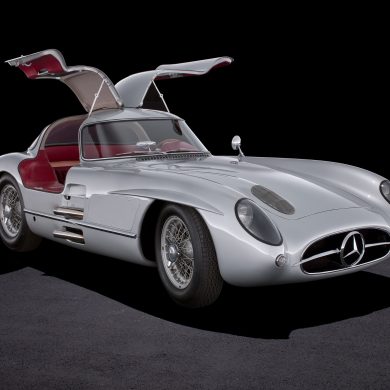
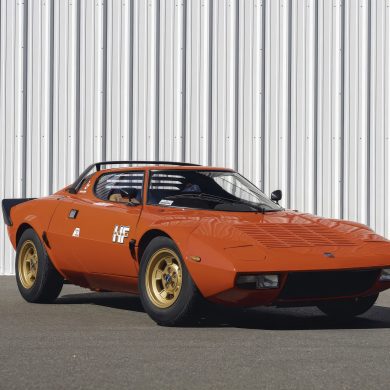
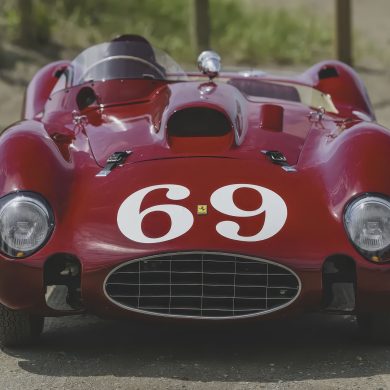
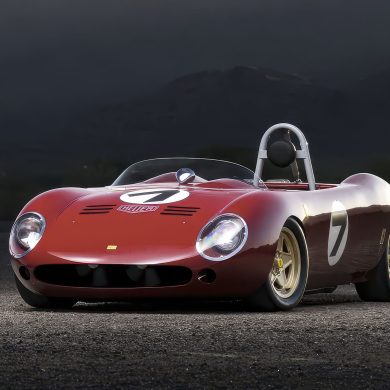
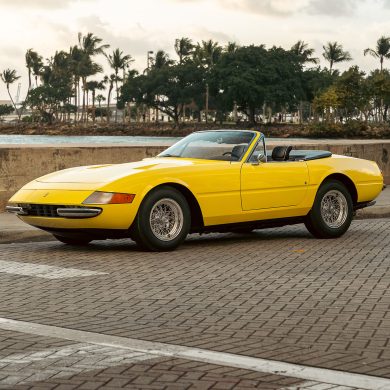
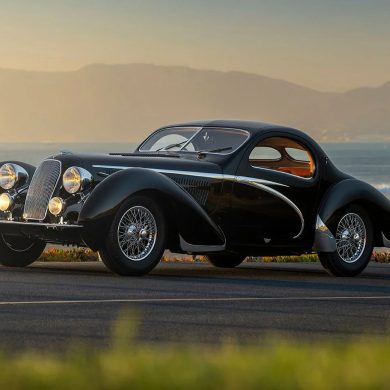


I can’t remember the last time Rick said something about an auction that I disagreed with. This is perhaps the most concise description of the auction grading system I’ve ever read–I’ll use it the next time I start to train someone.
I went to the Raleigh, NC auction last weekend and was appalled at the quoted condition of some of the cars and their actual condition. As an example, there were three 60s-era Mustangs that were quoted as “restored” but had rust, unrepaired chrome, and other details that told myself and others that they were misrepresented.
The market spoke on these; none sold, and their after-auction tag listed each at too high a price. No takers at the end of the day.
All auctioneers need to stick to a common standard of telling it like it is. Maybe they need to pay closer attention to what they are selling. Sadly, some do not.